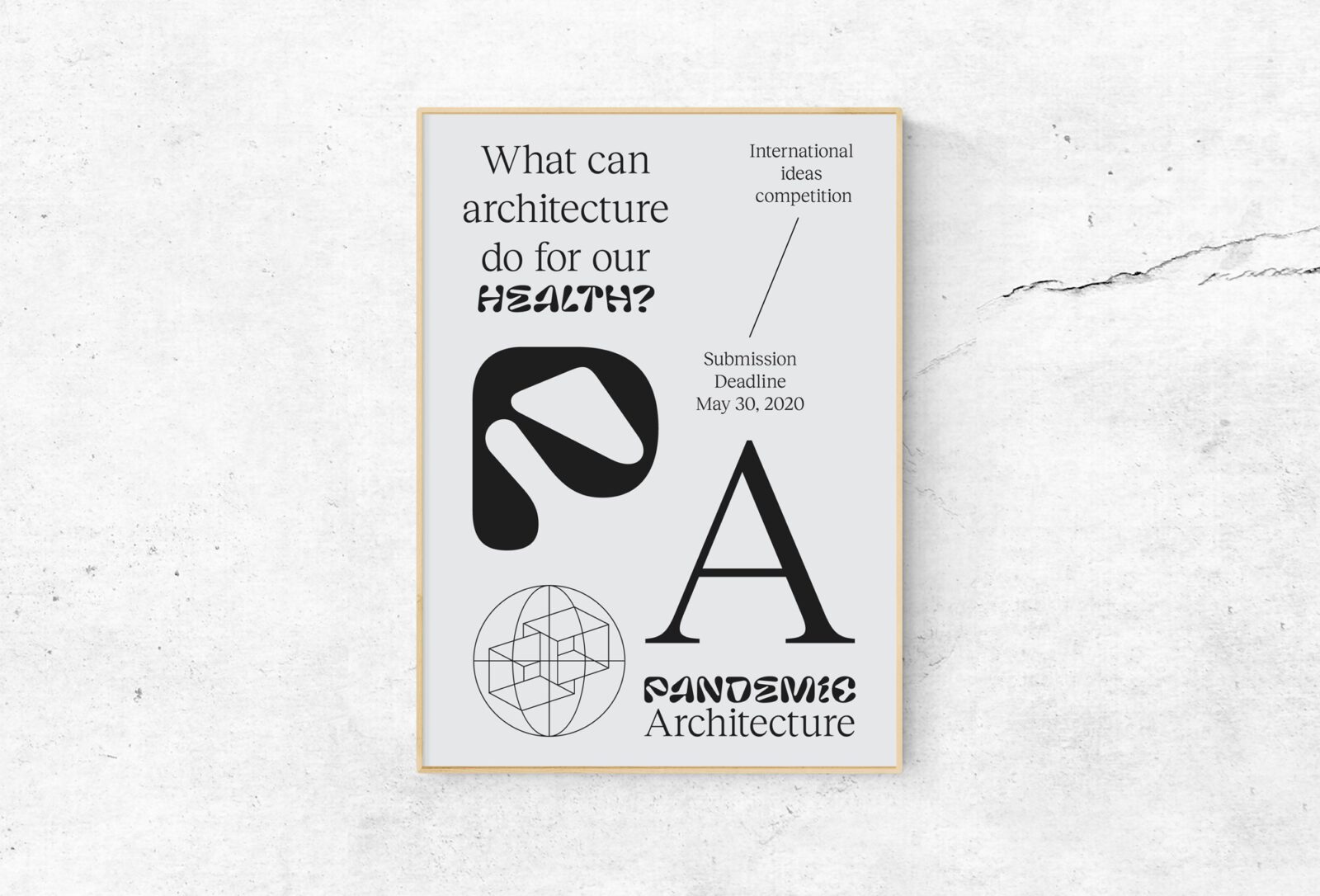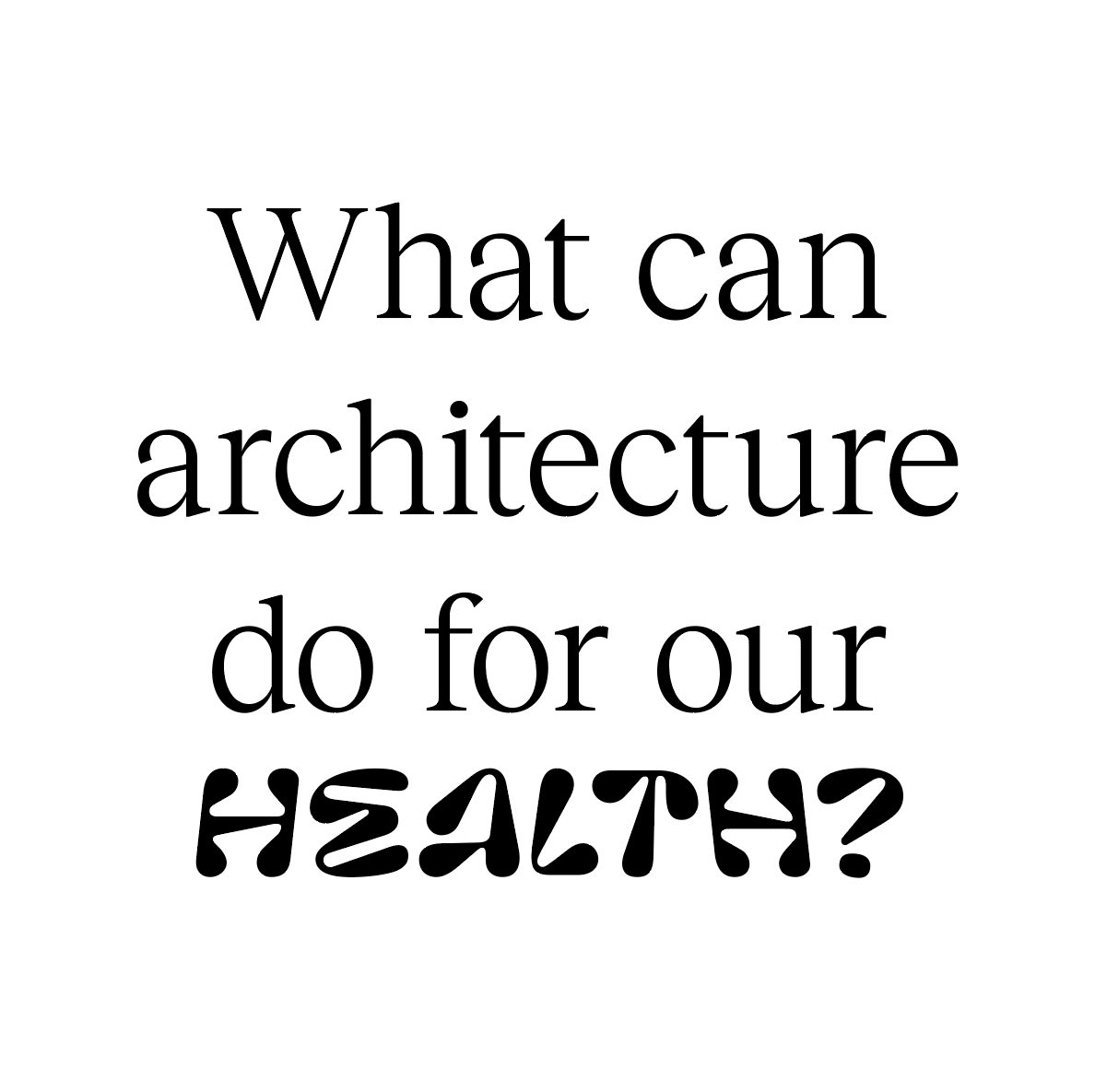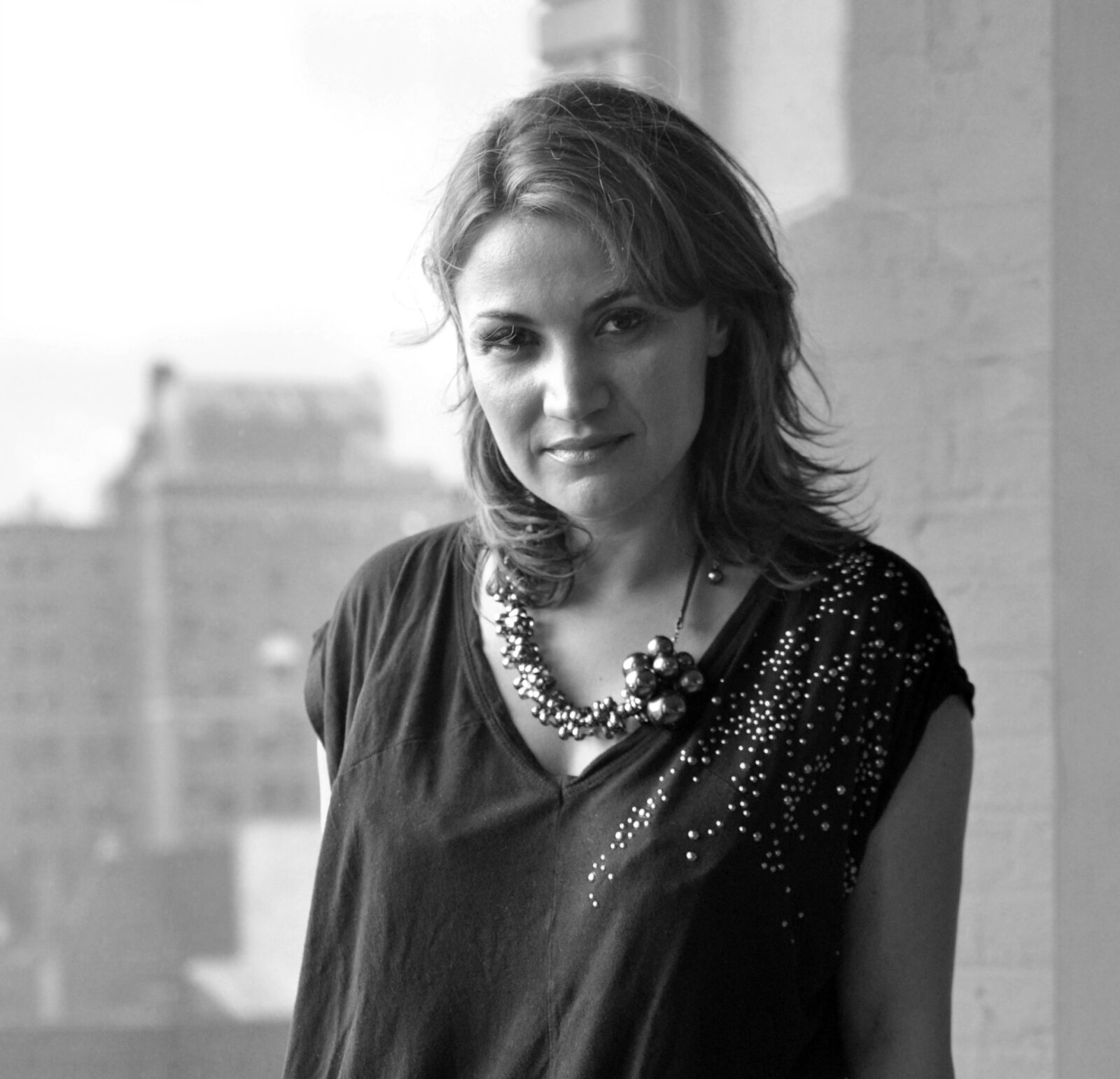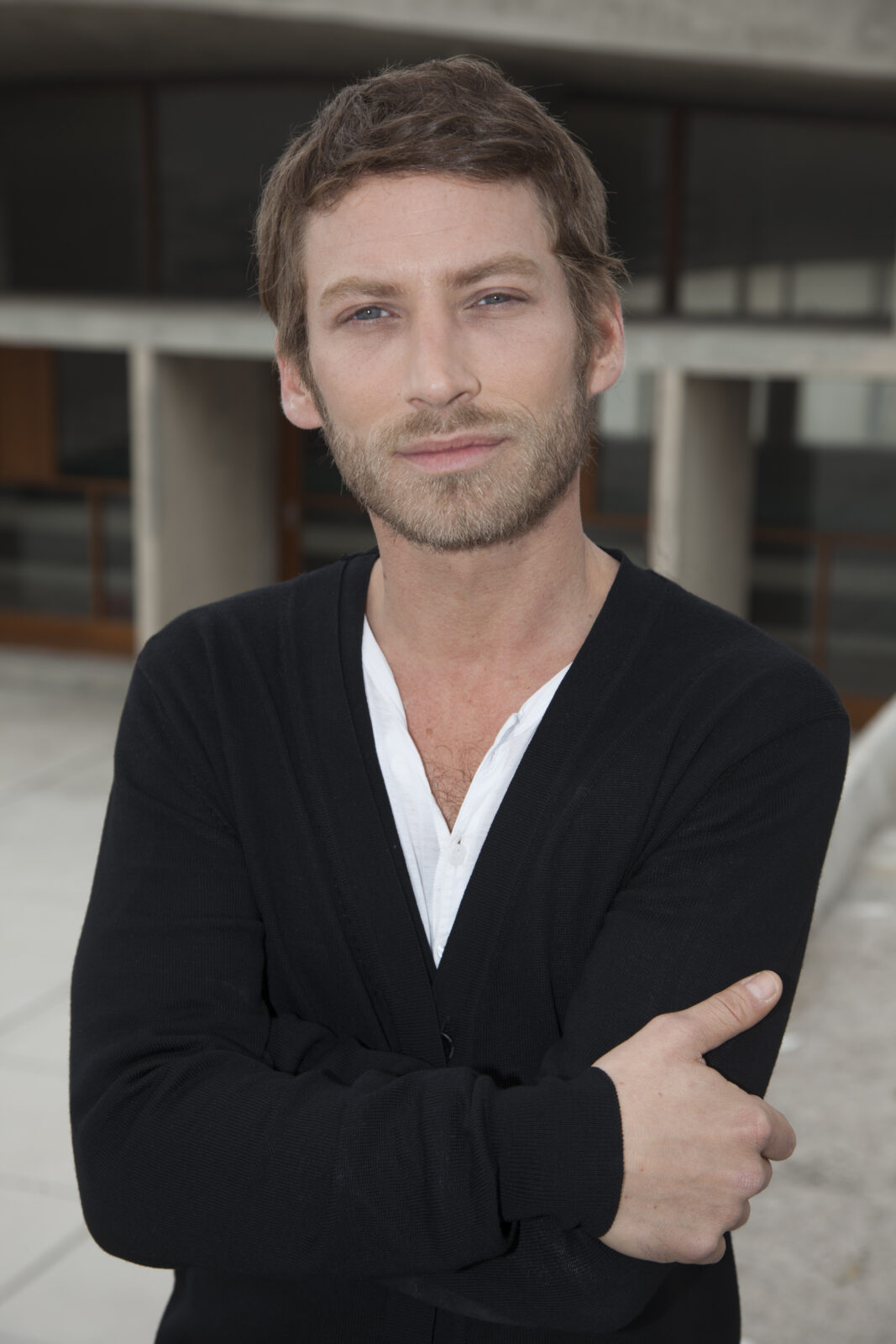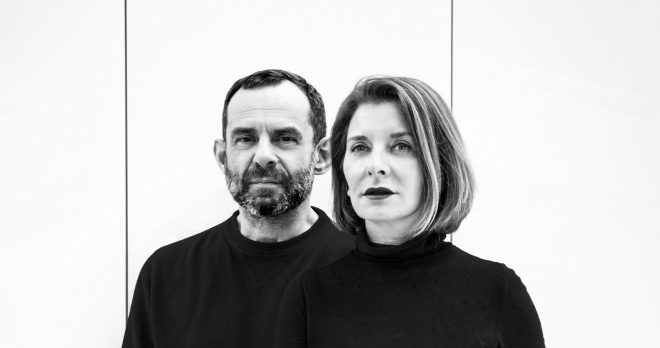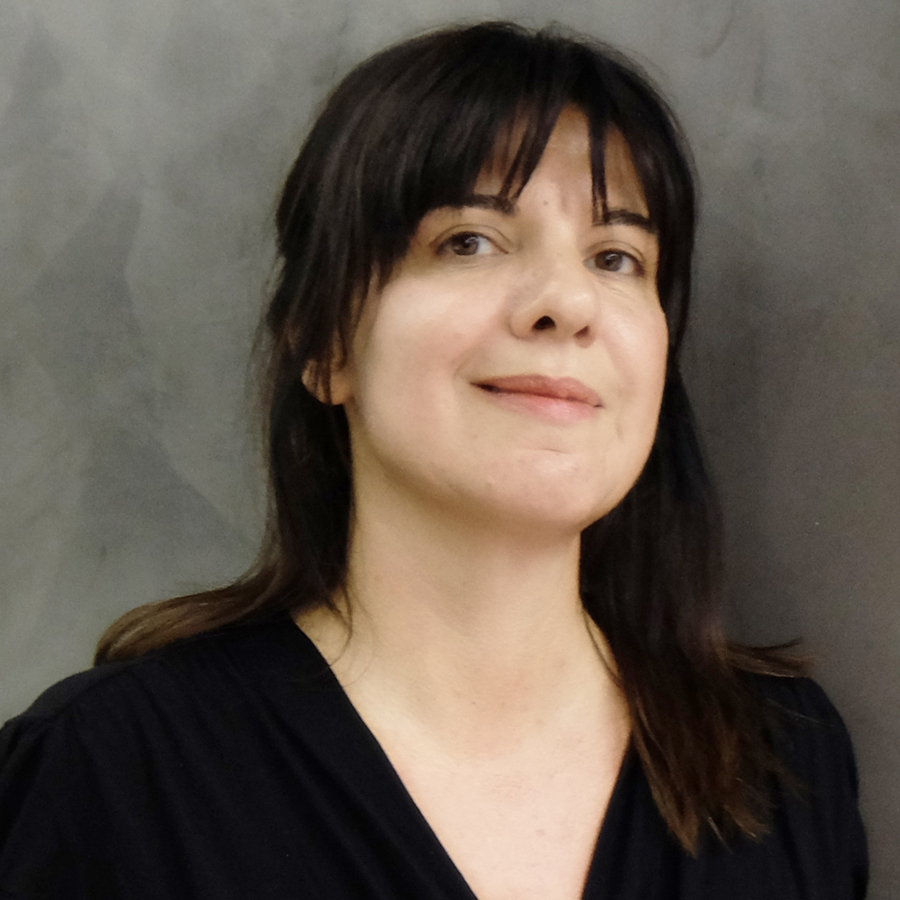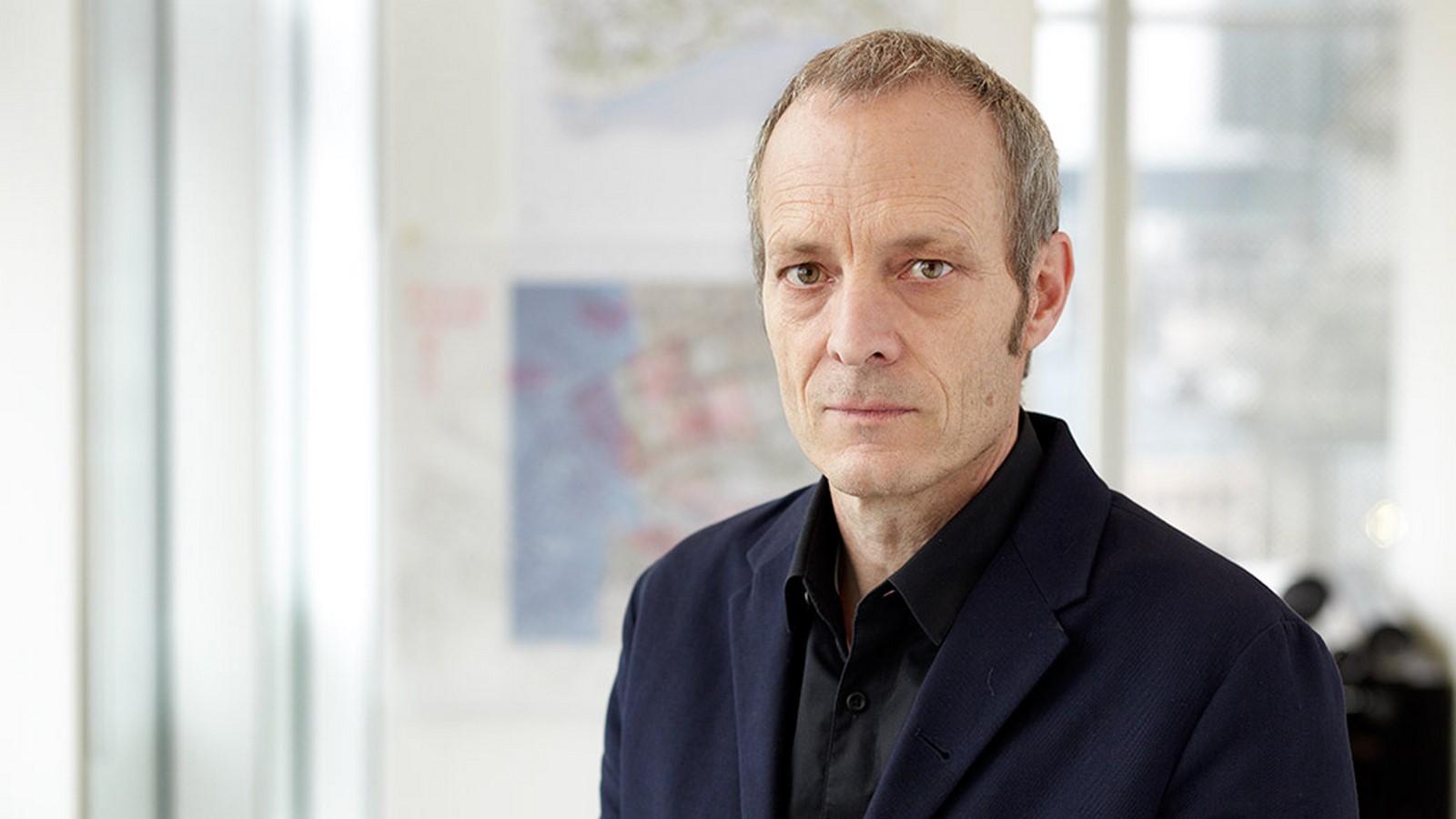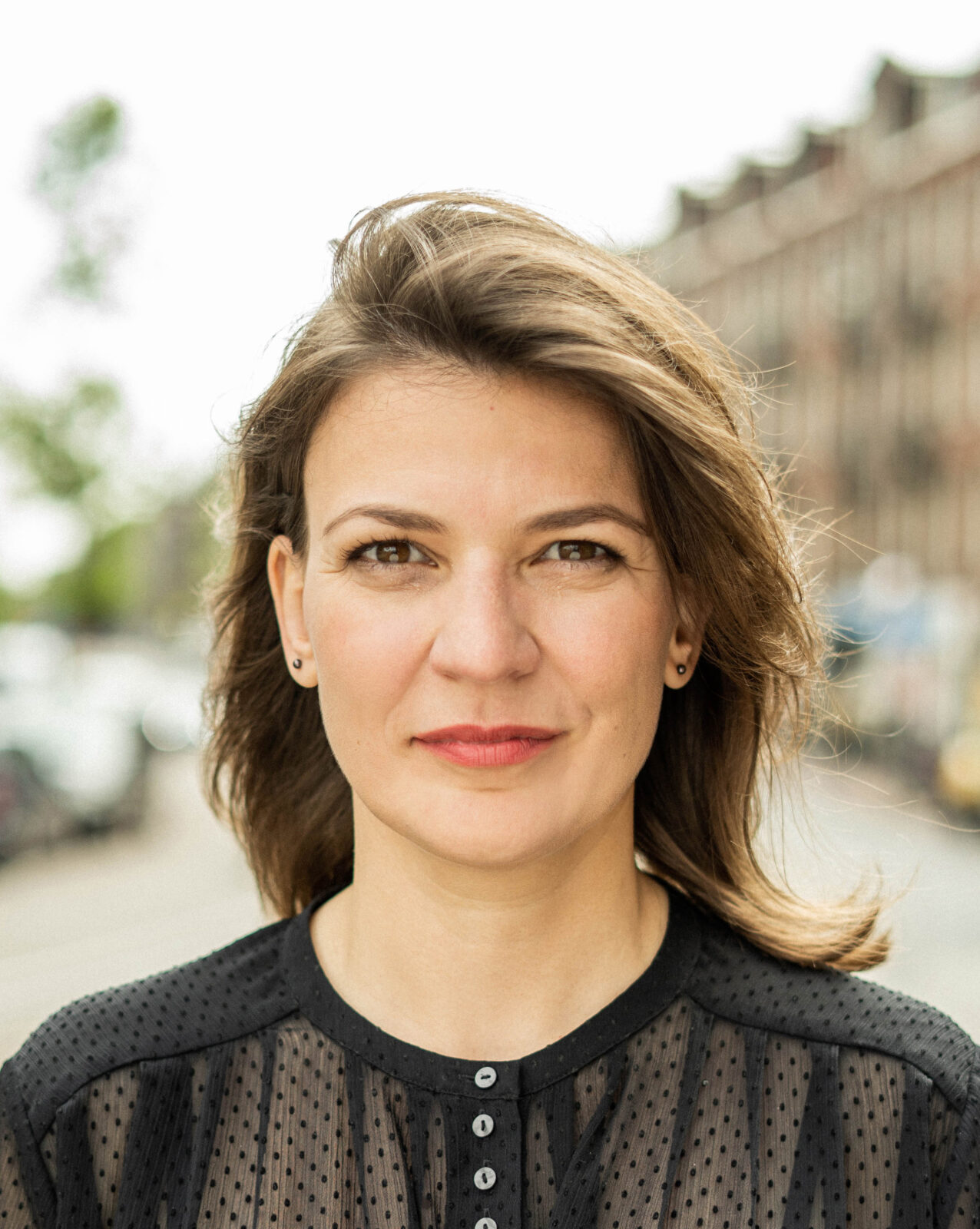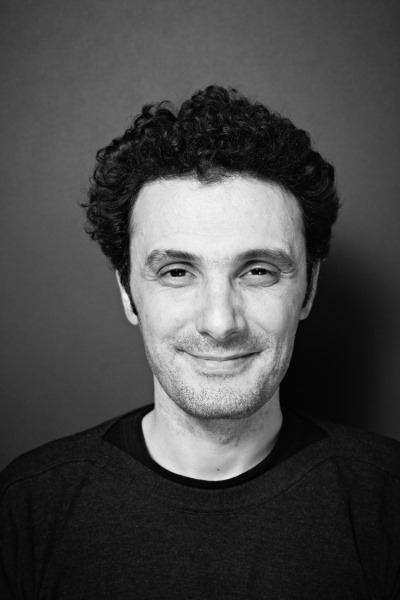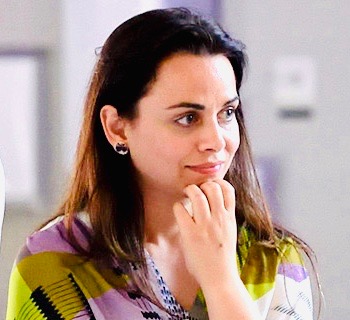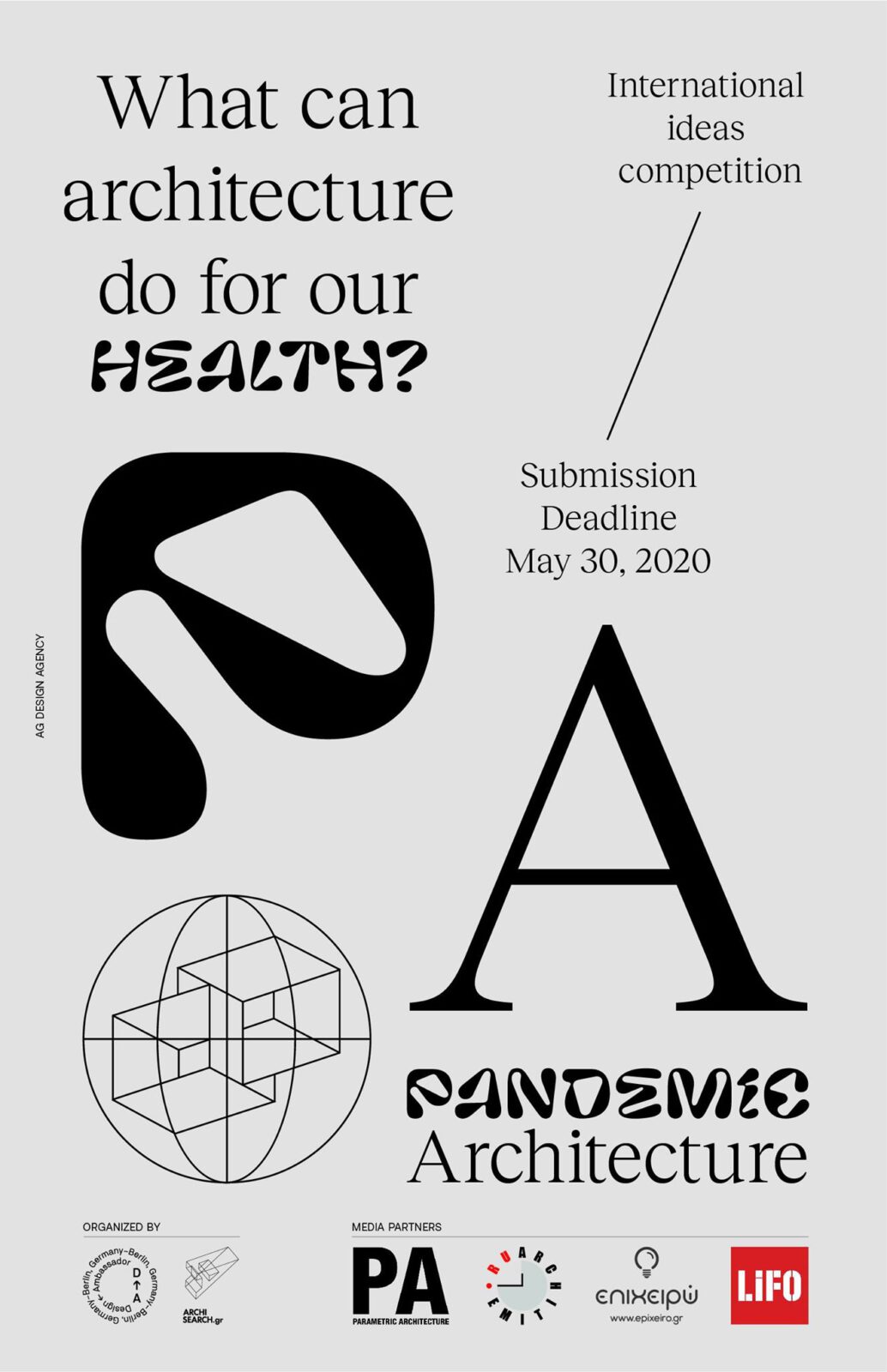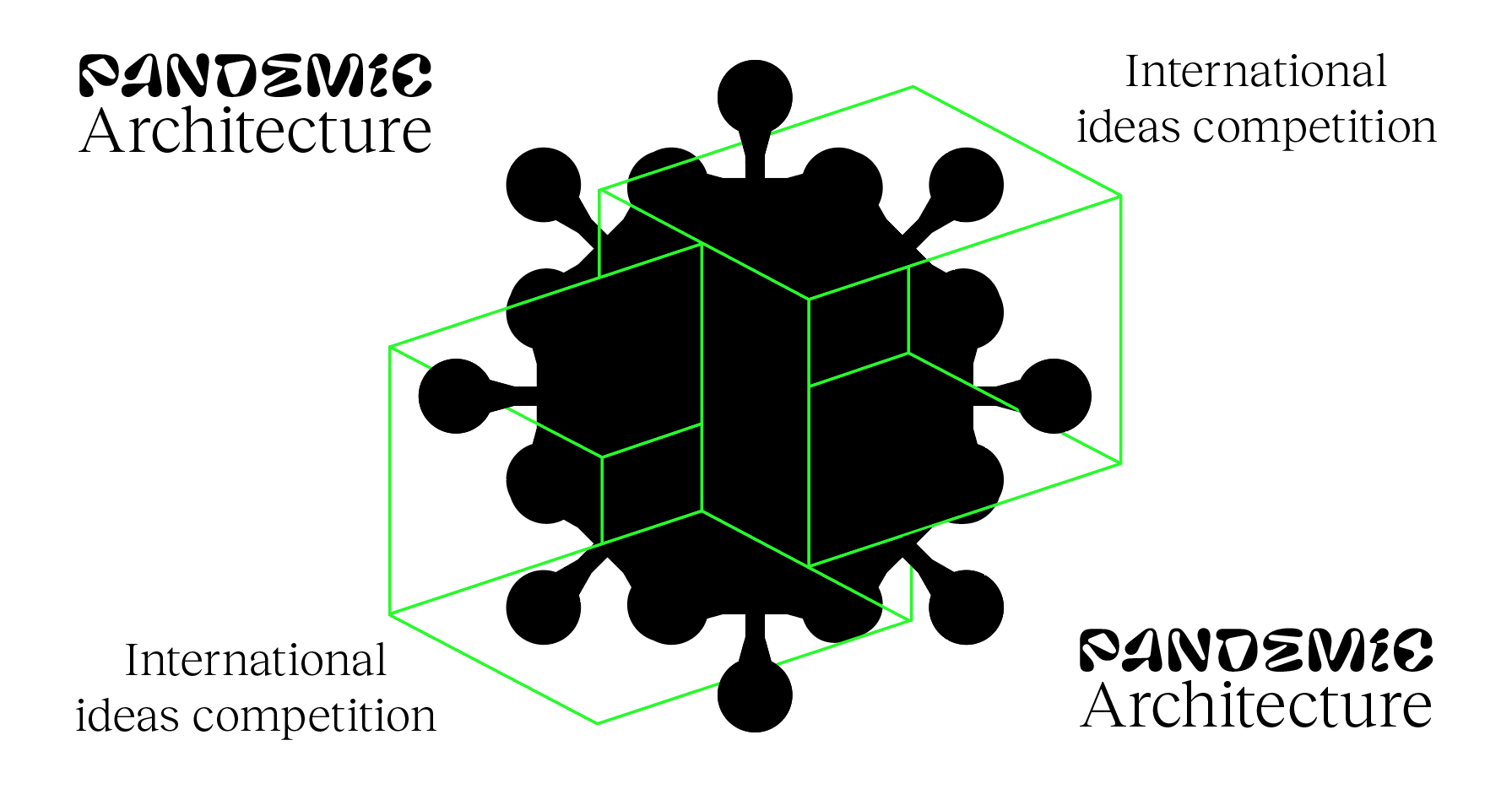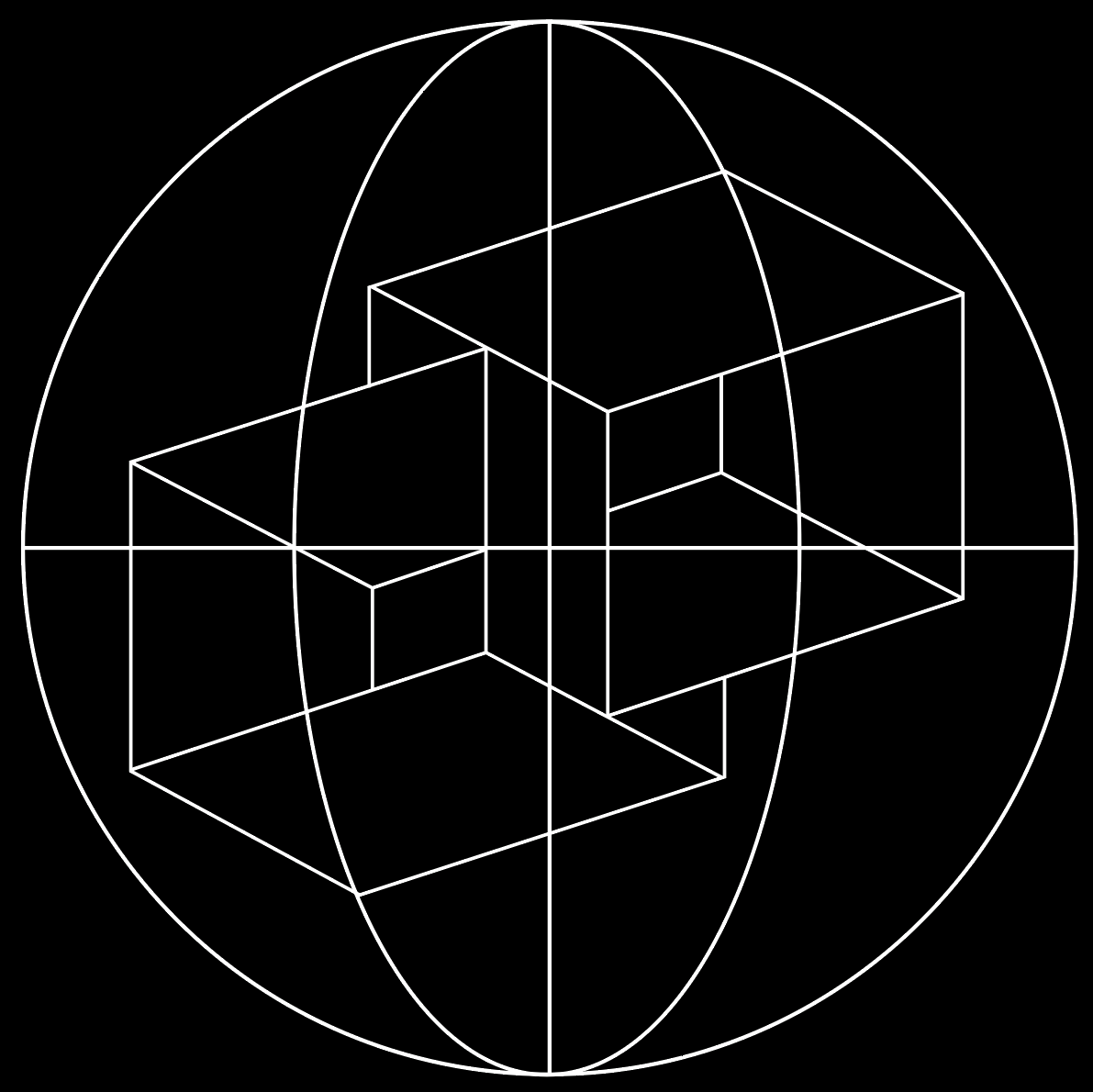*** UPDATE:
The impact of Pandemic Architecture competition on the international architectural community was astonishing, with the number of registrations to exceed 800, with the final proposals to exceed 400 and with participants from more than 60 different countries. Results will be officially announced on the 20th of September ****
Pandemic Architecture is an International Ideas Competition curated by the Design Ambassador for ARCHISEARCH.gr
“Extraordinary times” require extraordinary design.
What Can Architecture Do for our Health?
On 17 November 2019, a COVID-19 case was first reported in Wuhan, Hubei, China. On March 11, 2020, the World Health Organization declared the outbreak a pandemic, as over 138,000 cases have been confirmed in more than 130 countries and territories and at least 3,300 people have died from the disease. Over the course of a few days, the lives of millions of people have drastically changed.
Public health responses around the world have included travel restrictions, curfews, event cancellations, school closures as well as quarantines of all of Italy and the Chinese province of Hubei. In the name of public security, state authorities have implemented screening methods at airports and train stations and excessive coronavirus public monitoring, such as facial recognition technology that can detect elevated temperatures in a crowd or flag citizens not wearing a face mask, while apps use the personal health data of citizens.
In the meanwhile, millions of people are isolated inside a new type of bunker. In the Hubei Province, a new 25 thousand square meter hospital was constructed in only 10 days. Worldwide effects of the pandemic also include social and economic instability, xenophobia and racism and “voluntary prisoners” encouraged by stay-at-home movements.
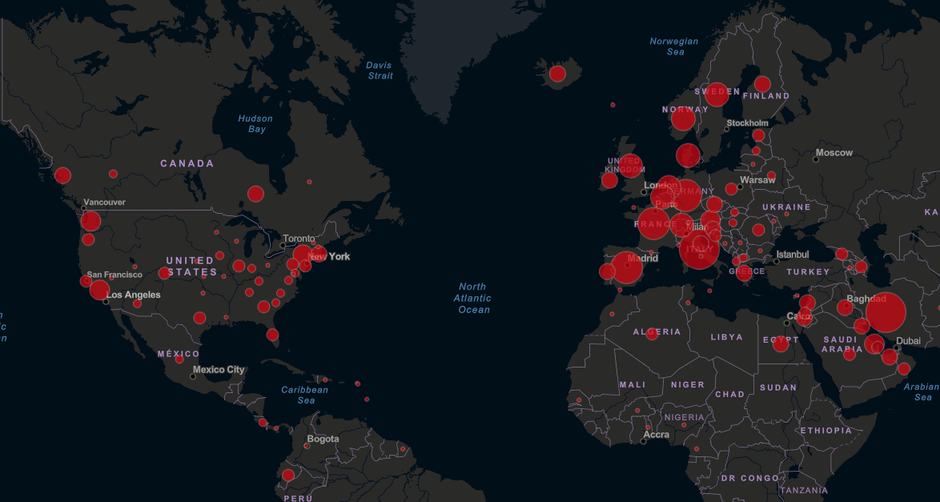
Architecture shapes Disease cities.
When the needs of citizens change, so do their cities and their homes.
There is a strong connection between health and architecture. Since ancient times, health care has been associated with the construction and use of specialized medical buildings and structures. Architecture helps shape the quality of our environments and can contribute to health and wellbeing. Topics concerning health have always been stimulating architectural innovations at different scales: territorial and urban development projects as well as architectural and interior design.
Health has often stimulated speculative design and experimental proposals within the architectural discipline as many works of famous architects, such as Alvar Aalto, Franco Albini, Ignazio Gardella and the theories of Le Corbusier, give attention to the psychological and physical well-being. Furthermore, hospitals adopted architectural features thought to promote health and limit disease spread while architects designed operating rooms and clinical spaces for utilitarian purposes — namely, maintaining a well-lit, aseptic environment. During the cholera outbreak in London, in 1856, Frederick Marrable was assigned to design the Metropolitan Board of Works in order to provide sanitary infrastructure.
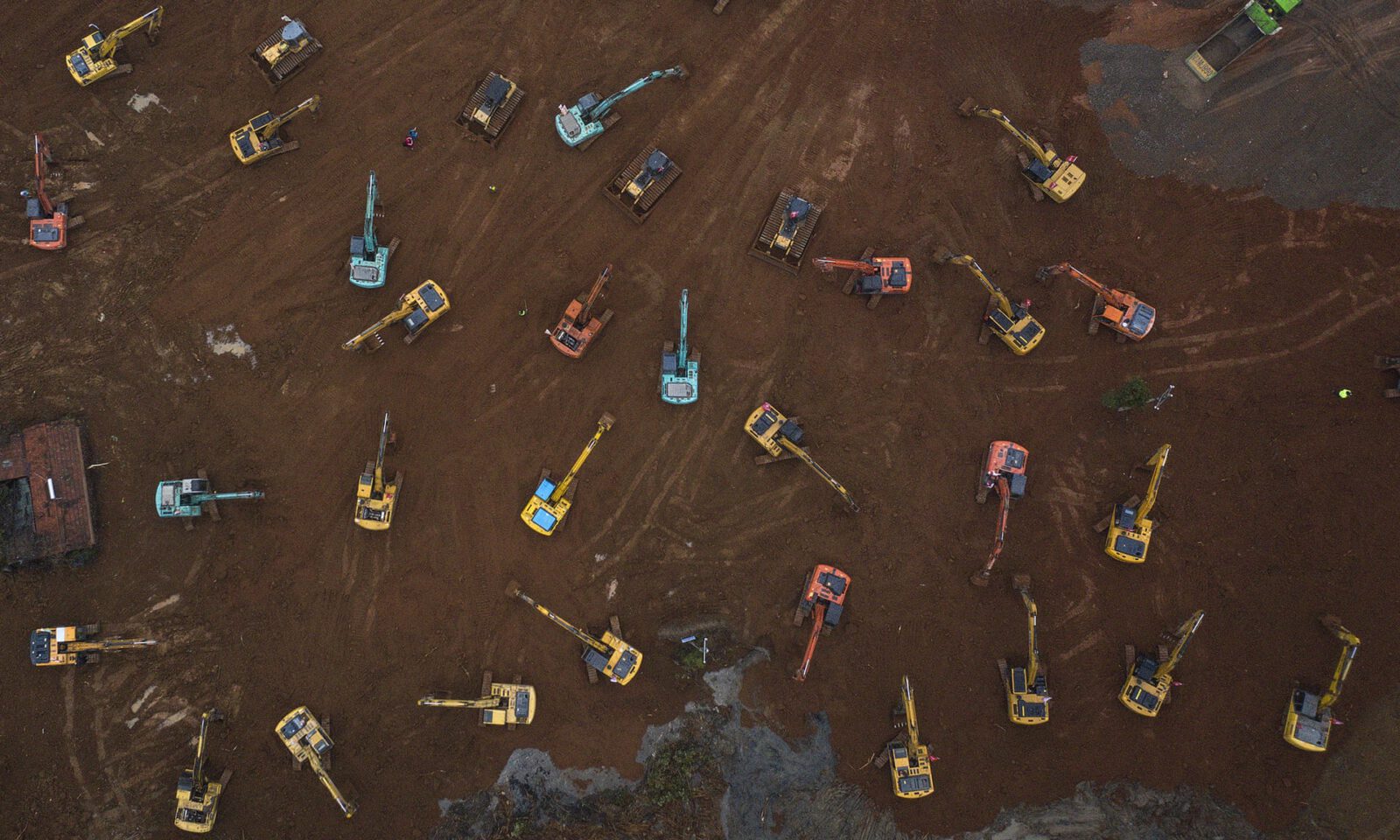
Pandemic Architecture
In today’s largely urban and interconnected world, infectious disease outbreaks and other public health emergencies pose a real threat to large cities.
Pandemic Realities addresses the spatial configurations, modes of living, and notions of the human body engendered by disruptive public health crises such as Covid-19 outbreak.
As the world faces new globalized health threats, there is a need to design the home/ the city of tomorrow, living in times whereas pandemics and viruses will be part of our everyday life.
By designing for the needs of a pandemic reality, architects act as guarantors and guardians of the Public Health of a community.
Virus outbreaks have their impact on urban space as well as on the living of millions of people.
In managing any public health crisis, the design of a city will have two overall tasks:
- dealing with the sudden large number of sick people
- keeping city life as normal as possible for everyone else
First, in the case of an emergency due to an epidemic or pandemic disease, a city is confronted with large-scale needs in supplies, medical spaces and cemeteries.
Second, designing places of living in the future should not only take into account functional spaces for individual and collective needs, but should also protect health, as humans spend more and more of their time isolated in built spaces.
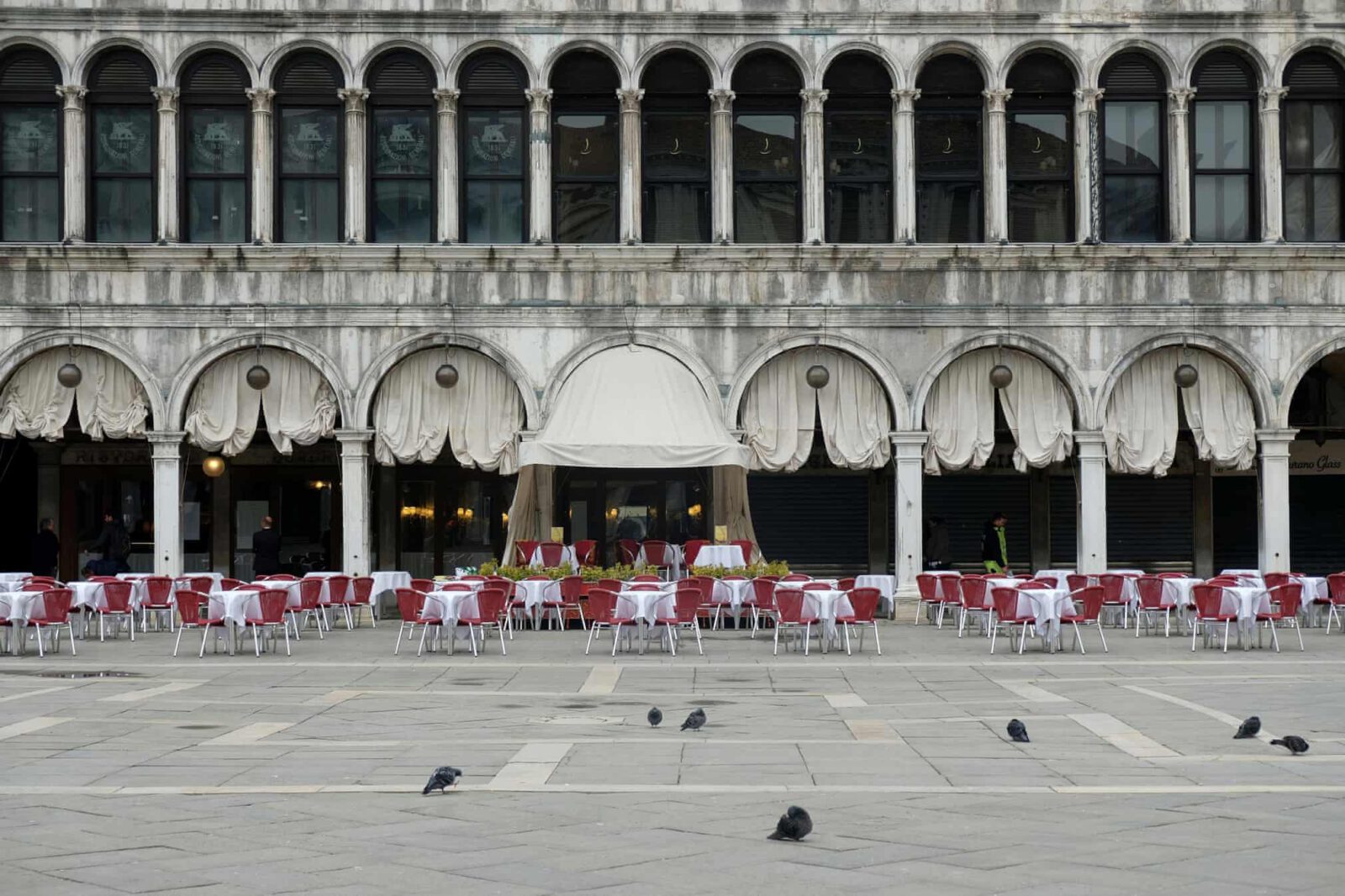
PHOTOGRAPH: MANUEL SILVESTRI/REUTERS
When millions of people are isolated and working from home, what features should a home have?
When people can’t travel, what is the role of the hotels?
When crowds are not allowed at public spaces, how cities and public spaces change?
In terms of health centres and interior design, what are the hygienic architectural details of the pandemic reality?
Pandemic Architecture Competition attempts to open up a dialogue and create a think tank, looking for ideas from the architectural and design community about the future of the living, the workspace, the public space and the tourism industry.
Urbanists, architects, designers, students, artists, performers and authors are invited to submit their ideas on Pandemic Architecture.
Proposals should be based on a realistic situation or on science fiction and should focus on territorial and urban development projects or architectural and interior design.
“…. Maybe something concretely practical? Buildings that can self-clean, that have features that make it easier to self isolate, bigger freezers, reserve freezers/pantries in basements so apartment buildings get the features a typical US home has, with those freaky garages full of huge freezers (obviously these wouldn’t run during good times, just be there so people can hunker down if needs be.)
Built in Skype screens or some sort of screen comms in each flat so people who might not have laptops can communicate. (There was a sad scene from Spain, one retirement home completely infected and on lockdown, staff don’t pick up phones and relatives can’t get ahold of their parents, don’t even know if they’re sick. Bodies cremated immediately to prevent spreading the disease so maybe not even a funeral? This guy was trying to force his way in to check on his dad but they wouldn’t let him in.) OK, very corona centric but it seems that we have to expect this will continue in various forms.
Ability to grow food on rooftop terraces, sides of buildings, some sort of hoist-system so you can sow, maintain and harvest…
Absence of touch and human company – things that can alleviate loneliness…big soft shapes you can stroke or cuddle up to? AI pets or servants?
These things will matter more in the end than ‘luxurious’ touches like marble bath rooms. Ability to air out houses effectively also important…..”
— thoughts came from someone recovering from a manageable case of the CV-19
Rethink/ReDesign
1. Emergency design (City Strategies, Hospitals, Cemeteries, Sanitary Spaces etc)
2. Living (Homes, Workspaces, Apartments, Public Spaces, Hotels etc)
Submission Requirements
I. Material containing 3-10 images /drawings /renders / collages / animation (separate files ex. jpeg, png, pdf)
II. Text describing the concept (500 words)
I + II will be evaluated by the jury.
III. 1 video narrative (2-3 minutes) of the authors explaining their concept in black and white
Questions to be answered in the video:
– Describe us your scenario/concept.
– Which questions does your proposal address?
– What Can Architecture Do for our Health?
– What role must and should have the architects facing public health emergencies?
The deliverables can only be submitted in digital files.
Criteria
The evaluation of entries will be based on the following criteria:
- Innovation, originality, creativity of the proposal
- General impression and clarity of the overall concept

Prizes
WINNERS (2 Prizes)
2.000 euros
Publication on Archisearch.gr
Publication in Archisearch The Paper Edition
Reviews in digital magazines and several architecture blogs
SPECIAL DISTINCTION WITH GIFT VOUCHER (2 Prizes)
Online Lighting Masterclass with Creative Lighting (value £500 each)
Publication on Archisearch.gr
Publication in Archisearch The Paper Edition
Reviews in digital magazines and several architecture blogs
HONOURABLE MENTIONS (8 Prizes)
Publication on Archisearch.gr
Publication in Archisearch The Paper Edition
Reviews in digital magazines and several architecture blogs
Schedule
Lauch: March 16
Registration Deadline: May 20
Send at submitarticle@archisearch.gr a .doc file containing an 8 digit code selected by you (all digits should be numbers) + the names and contact details of the participants (name, email, telephone, country).
The registration is free.
Submission Deadline: May 31, 11:59 pm GMT
Send your files with a wetransfer/dropbox/google drive link at submitarticle@archisearch.gr.
The files should be only named after the 8-digit team code and should be anonymous.
Jury
“I am interested in how the new reality of COVID-19 generates front-line protective design solutions, but also in how the design of our environments is placed into an enlarged theoretical, historical and cultural context.”
— Lydia Kallipoliti
LYDIA KALLIPOLITI, New York, USA
Lydia Kallipoliti is an architect, engineer and scholar whose research focuses on the intersections of architecture, technology and environmental politics. She is an Assistant Professor of Architecture at the Cooper Union in New York. Prior to Cooper Union, she was an Assistant Professor at Rensselaer Polytechnic Institute, where she directed the MSArch program and Syracuse University; she also taught at Columbia University, Pratt Institute.
Kallipoliti is the author of the book The Architecture of Closed Worlds, Or, What is the Power of Shit (Lars Muller, 2018), as well as the History of Ecological Design for Oxford English Encyclopedia of Environmental Science. Her work has been exhibited in a number of international venues including the Venice Biennial, the Istanbul Design Biennial, the Shenzhen Biennial, the Oslo Trienalle, the London Design Museum and the Storefront for Art and Architecture. Kallipoliti is the recipient of a Webby Award, grants from the Graham Foundation, and the New York State Council for the Arts, an Honorable Mention at the Shenzhen Biennial, a Fulbright scholarship, and the ACSA annual award for Creative Achievement. Recently, her practice ANAcycle was recognized as a Leading Innovator in Sustainable Design in BUILD’s 2019 Design & Build Awards, while her book was a finalist among all publications in design, art and architecture in 2018 for the Cornish Family Prize by the National Gallery of Victoria in Melbourne. Kallipoliti holds a Diploma in Architecture and Engineering from AUTh in Greece, a SMArchS from MIT and a PhD from Princeton University.
Read Lydia Kallipoliti’s statement here!
“There is already a lot of utopia in Instargam. Here we have to think of solutions that will serve the common good. Not necessarily to make an architecture move, but to come up with ideas that can help us. It could be the kit of a building that would open up and use its instructions in case of an epidemic.”
— Ora Ito
ORA ITO, Paris, France
A phenomenon in pop culture, he is the youngest designer of his generation to collaborate with jewels of luxury goods and industry, after the huge multi-acclaimed success of his aluminium Heineken bottle. Cassina, Cappellini, Bouygues, Alstom, Laguiole, Zanotta and Accor highly rate his sculptural design that has become a mark of modernity.
The multidisciplinary, transversal Ora ïto studio has since gone from telephone to architecture, from furniture to the hotel industry, from perfume to tramways and from flying saucers to restaurants, manipulating symbols to simplify them. A tenacious methodology for which he has invented a neologism: simplexity, decoding today’s DNA to conceptualise future mutations. His fluid vocabulary materialises movement reinventing streamlining in the digital era and giving shape to the desires of our contemporary society.
“Pandemic Architecture can bring together not only solutions, but also bring together this creative community to our every day life. This competition will help to find out what is social architecture and design, today.“
—Roberto Palomba, Palomba Serafini Associati
ROBERTO PALOMBA, Milan, Italy – Palomba Serafini Associati
“Architecture theory has been preparing us for dystopia. (…)
The present situation calls for a critical rethinking of past knowledge, seizing the opportunity to discuss, albeit once again crisis on planetary scale enhanced with a new more empathetic turn to humanism.”
—Sophia Vyzoviti
SOPHIA VYZOVITI, Greece
Architect, researcher and educator. Associate Professor in Architectural Design at the Department of Architecture, University of Thessaly.
Author of books ‘μικροκατοικια’ (2017) ‘soft shells’ (2011) ‘supersurfaces’ (2006) and ‘folding architecture’ (2003)
In her practice, Sophia sustains a research by design approach. In addition to architecture and urban design projects she produces architectural prototypes and temporary installations. Her goal is to enhance collective creativity within a critical spatial practice.
Read Sophia Vyzoviti’s statement here!
“We have waited long enough! (…) Put Theory and Practice together for real solutions and new directions. We can’t wait until 2030 or 2050.”
— Tom Lindblom, Gensler
TOM LINDBLOM – Gensler
Tom is a Lifestyle Sector leader for Gensler’s Latin American region. As a hospitality leader for the design firm, he transitioned full-time to Gensler’s Costa Rica office from the London office to support the dynamic tourism market in LATAM. He has more than 25 years of experience on a variety of projects, with a special focus on hotels, resorts, mixed-use and museums. Working with diverse clients in Latin America, Europe, the Middle East, Southeast Asia, and the United States has broadened his understanding and appreciation for unique opportunities in a variety of markets. Tom is active with clients to develop sustainable hotels and resorts that operate efficiently from an economic, social and environmental position. His experience also includes design and planning for several museums and galleries in the United States and Europe. Tom holds a Masters of Architecture degree from the University of Utah and an undergraduate degree in the History of Science and Technology from Hampshire College in Amherst, Massachusetts.
Read Tom Lindblom’s statement here!
“I am looking forward to proposals that range from private to public, interior to urban and those that show an innovative use of technology. In a way, this is an opportunity to reshape our world in every respect towards healthy living.”
— Marianthi Tatari, UN Studio
Marianthi Tatari, Amsterdam, The Netherlands – UN Studio
Marianthi is an Associate Director at UNStudio, a knowledge-driven architecture and design practice in Amsterdam, Frankfurt, Shanghai and Hong Kong. In her role she is leading projects with a focus on design, organization, and bridging bold ideas with practice methodology.
Marianthi has worked worldwide in over 15 countries with projects in architecture, urbanism and interior design. She has led the Architectural Guidelines design for the Metro Network in Doha. Her current projects include the Booking.com Campus in Amsterdam and the Residences at Mandarin Oriental in Istanbul. As a true systems thinker, Marianthi takes a scalar approach to design, addressing issues of experience, identity and sense of place in various scales and typologies. Her heart lies in creating places that inspire the best connections among people.
Read Marianthi’s statement here!
“Participants are encouraged to form interdisciplinary teams and re-think the way they socialize, work together and support each other in these extraordinary circumstances as part of living and as part of the public amenities, the function of which is being adapted to protect the public health.”
— Kyriakos Chatziparaskevas, Heatherwick Studio
Kyriakos Chatziparaskevas, London, UK – Heatherwick Studio
Kyriakos Chatziparaskevas works at Heatherwick Studio since 2014. His current work at the studio involves carrying through the construction of Google’s innovative new HQ in California.
Kyriakos’ work has earned him international experience from concept to completion in a wide variety of prestigious projects that include objects, art installations, buildings, public spaces and urban infrastructure. He has worked with corporate clients, as well as with various cities and institutions. His keen interest in polymathy, encompassing design at the intersection of art, architecture, engineering and science, contributes to his experience in practising across different disciplines and implementing it on a variety of Research and Development projects.Alongside practicing architecture, Kyriakos has lectured and presented his work at various universities, institutions and events.
Kyriakos holds a Diploma in Architecture and Engineering from the Aristotle University of Thessaloniki, Greece, and a MA in Advanced Architectural Design from the Staedelschule in Frankfurt, Germany.
Read Kyriakos’ statement here!
“Architecture must be at the forefront of design innovation to adapt our built environment to address this global crisis. This pandemic has shown us how quickly norms and reality can change. New strategies will allow us to develop dynamic built environments to accommodate rapid social change at an urban scale.”
— Martha Tsigkari, ARD Group, Foster + Partners
Martha Tsigkari, London, UK – Foster + Partners
Martha Tsigkari is a Partner of the Applied Research + Development (ARD) group at Foster + Partners. She is a specialist in a wide range of areas including performance-driven design and optimisation, AI and machine learning, interfaces & interaction, design-to-production and fast feedback & integration. Her work incorporates the development of simulation tools, the introduction of integrated processes and the creation of physical interfaces. She has provided solutions for hundreds of diverse projects such as the new airport for Mexico City.
Martha holds an Architect-Engineer’s degree from the Aristotle University in Greece, and an MSc in Adaptive Architecture & Computation from UCL. She is a member of RIBA, a UCL fellow and module leader at the MSc Architectural Computation at the Bartlett and a juror at various schools, including the AA and UPenn. She has taught, lectured and published on the subject of computational design internationally.
Curator Archisearch & Design Ambassador
Assistant Curator Tina Marinaki, editor in chief Archisearch.gr
Pandemic Architecture competition is held under the auspices of the Association of University Graduate Architects – Panhellenic Union of Architects, the Dodecanese Architects Association, Cyprus Architects Association & the French Institute of Greece.
Media Partners: Parametric Architecture, Architime, Designboom, Competitions Archi, Bustler, LIFO, Huffington Post, Andro, Fortune Greece, Epixeiro
Community Partners: Xi’ an Jiaotong University, Creative Lighting, Mdff Greece-Cyprus, Ecoweek
Graphics: AG Design Agency
_______________________________________________________________________
Frequently Asked Questions
How do I register?
You can register by sending us an 8 digit code selected by you (with numbers) and your contact details (name, email, tel, country) until May 20 and submit you final proposal named only after your code by May 31.
Are individual proposals/ groups allowed?
Both are welcome to participate.
Is there a limit on the number of team members?
No, there isn’t a limit.
What is the cost for registration?
The competition is free and open to everyone who would like to participate!
What is the language of the competition?
All texts should be in English.
Are there any guidelines for the subject of the competition?
The subject of the proposal is free however we have 2 categories in order to help the participants:
Rethink/ReDesign
- Emergency design (City Strategies, Hospitals, Cemeteries, Sanitary Spaces etc)
- Living (Homes, Workspaces, Apartments, Public Spaces, Hotels etc)
It is optional to choose one of the two categories. If you want to combine the two or have any other idea please feel free to do so.
Should I situate my proposal on a real site?
Participants are free to situate their project on a real/specific site or not. You can also base your proposal on a non real site.
Is there a specific size/scale for the proposal?
No, the size/scale is free.
Can I submit a project previously designed by me?
The material submitted should not have been published before in order to be evaluated fairly and anonymously. However, you could include a part of a previous project.
What should I submit? Submission Requirements
1) Material containing 3-10 images / drawings / renders / collages / animation preferably up to 1minute video in mp4 (optional)
The 10-limit images is not strict.
2) Text describing the concept (500 words)
1+2 will be evaluated by the jury.
3) 1 black & white video narrative (2-3 minutes) of the authors explaining their concept
Questions to be answered in the video:
– Describe us your scenario/concept.
– Which questions does your proposal address?
– What Can Architecture Do for our Health?
– What role must and should have the architects facing public health emergencies?
The video will not be evaluated by the jury.
Video can display the teams talking about their vision.
-It has to be a focused on the team involved on the project design.
-You can shoot with your mobile phone or other camera talking about your project.
-This footage will be used for the communication in the media and our vimeo.com/archisearch channel after the end of the competition.
Why do you need the B&W video?
The video in which you explain the project is not going to be evaluated. It will be later published in order to present online your proposal. The video will be about the people involved in the design talking about their vision as explained above.
What is the layout of the final submission?
The competition requires 3-10 images, a description and a video explaining the project. You can send the images and the description as seaparate files but if you wish you can also include a presentation. You can choose the final layout of the images.
What are the prizes for the winners?
WINNERS (2 Prizes)
2.000 euros
Publication on Archisearch.gr
Publication in Archisearch The Paper Edition
Reviews in digital magazines and several architecture blogs
SPECIAL DISTINCTION WITH GIFT VOUCHER (2 Prizes)
Online Lighting Masterclass with Creative Lighting (value £500 each)
Publication on Archisearch.gr
Publication in Archisearch The Paper Edition
Reviews in digital magazines and several architecture blogs
HONOURABLE MENTIONS (8 Prizes)
Publication on Archisearch.gr
Publication in Archisearch The Paper Edition
Reviews in digital magazines and several architecture blogs
Can I publish my ongoing project via social media?
The evaluation will be anonymous. As a result projects should NOT be published before the official announcement of the winners.
Is there any Visual Material I can share about the competition in my social media?
Visual Communication Material about the Competition is available for your participation and communication purposes in your social media in instagram and facebook etc in this link VISUAL MATERIAL Freel Free to share.
How do I submit my proposal?
Please send all your files with a wetransfer/dropbox/google drive link at submitarticle@archisearch.gr by May 31.
The files should be only named after the 8-digit team code you have previously selected and should be ANONYMOUS. For example 12345678
Is there any specific layout/size for the submitted material?
The competition does not require any specific size for the submitted material. Your submission can contain 3-10 images /drawings /renders / collages / animation. The resolution for jpegs should be 300 dpi. The size and the layout is free.
–
Η Design Ambassador και το ARCHISEARCH.gr προκηρύσσουν διεθνή Διαγωνισμό Ιδεών με τίτλο Pandemic Architecture.
Τι μπορεί να κάνει η Αρχιτεκτονική για την υγεία μας;
Στις 17 Νοεμβρίου 2019 αναφέρθηκε για πρώτη φορά ένα κρούσμα COVID-19 στην πόλη Wuhan, στην Κίνα. Στις 11 Μαρτίου 2020, ο Παγκόσμιος Οργανισμός Υγείας κήρυξε επισήμως πανδημία, με πάνω από 138.000 επιβεβαιωμένους ασθενείς σε περισσότερες από 130 χώρες και τουλάχιστον 3.300 θανάτους. Μέσα σε λίγες μέρες, η ζωή εκατομμυρίων ανθρώπων άλλαξε δραστικά.
Οι αντιδράσεις για την αντιμετώπιση του ιού ανά τον κόσμο περιλάμβαναν ταξιδιωτικούς περιορισμούς, απαγορεύσεις κυκλοφορίας, ακυρώσεις εκδηλώσεων, κλείσιμο σχολείων καθώς και καραντίνα σε όλη την Ιταλία και την κινεζική επαρχία Hubei. Στο όνομα της δημόσιας ασφάλειας, οι κρατικές αρχές εφαρμόζουν μεθόδους ανίχνευσης στα αεροδρόμια και στους σιδηροδρομικούς σταθμούς και καταφεύγουν σε ακραία μέτρα παρακολούθησης των πολιτών, όπως η τεχνολογία αναγνώρισης προσώπου που μπορεί να ανιχνεύσει αυξημένες θερμοκρασίες πολιτών που βρίσκονται ανάμεσα σε πλήθος ή πολιτών που δε φορούν μάσκα προσώπου, παραβιάζοντας τα προσωπικά δεδομένα υγείας των πολιτών.
Εν τω μεταξύ, εκατομμύρια άνθρωποι απομονώνονται μέσα σε ένα νέο τύπο bunker. Στην επαρχία Hubei, ένα νέο νοσοκομείο 25 χιλιάδων τετραγωνικών μέτρων κατασκευάστηκε μέσα σε μόλις 10 ημέρες. Οι παγκόσμιες επιπτώσεις της πανδημίας περιλαμβάνουν επίσης την κοινωνική και οικονομική αστάθεια, αύξηση της ξενοφοβίας και του ρατσισμούς, καθώς και “εθελοντές φυλακισμένους” χάρη στις καμπάνιες που ενθαρρύνουν την παραμονή στο σπίτι.

Όταν αλλάζουν οι ανάγκες των πολιτών, αλλάζουν και οι πόλεις και οι κατοικίες τους.
Η σύνδεση της υγείας με την αρχιτεκτονική είναι ισχυρή.
Από τα αρχαία χρόνια, η υγειονομική περίθαλψη συνδεόταν με την κατασκευή και τη χρήση ειδικευμένων ιατρικών κτιρίων και δομών. Η αρχιτεκτονική βοηθά στη διαμόρφωση της ποιότητας του περιβάλλοντός μας και μπορεί να συνεισφέρει στην υγεία και την ευεξία. Τα θέματα που αφορούν την υγεία ανέκαθεν ενθάρρυναν την αρχιτεκτονική κανοτομία σε διαφορετικές κλίμακες: έργα χωρικής και αστικής ανάπτυξης καθώς και τον αρχιτεκτονικό και εσωτερικό σχεδιασμό. Πολλά έργα γνωστών αρχιτεκτόνων, όπως οι Alvar Aalto, Franco Albini, Ignazio Gardella και το θεωρητικό έργο του Le Corbusier, εστιάζουν στην ψυχολογική και σωματική ευεξία.
Επιπλέον, τα νοσοκομεία υιοθέτησαν αρχιτεκτονικά χαρακτηριστικά που αποσκοπούσαν στην προαγωγή της υγείας και στον περιορισμό της εξάπλωσης των ασθενειών, ενώ οι αρχιτέκτονες σχεδίαζαν αίθουσες χειρουργικής και κλινικούς χώρους για λειτουργικούς σκοπούς δημιουρώντας ένα καλά φωτισμένο και ασηπτικό περιβάλλον. Παράλληλα, ρόλος της αρχιτεκτονικής ως προς την υγεία ήταν να σχεδιάσει τις κατάλληλες υποδομές σε έκτακτες ανάγκες, όπως για παράδειγμα κατά τη διάρκεια της επιδημίας χολέρας στο Λονδίνο, το 1856, όταν ανατέθηκε στο Frederick Marrable να σχεδιάσει το Metropolitan Board of Works προκειμένου να παρέχει υγειονομικές υπηρεσίες.
Στο σημερινό αστικό και διασυνδεδεμένο κόσμο, οι εστίες μολυσματικών ασθενειών και άλλες καταστάσεις έκτακτης ανάγκης για τη δημόσια υγεία αποτελούν πραγματική απειλή για τις μεγάλες πόλεις.
Καθώς ο κόσμος αντιμετωπίζει νέες παγκοσμιοποιημένες απειλές για την υγεία, υπάρχει ανάγκη να σχεδιαστεί το σπίτι / η πόλη του αύριο, ζώντας σε καιρούς, ενώ οι πανδημίες και οι ιοί θα αποτελέσουν μέρος της καθημερινότητάς μας.
Σχεδιάζοντας για τις ανάγκες μίας πραγματικότητας που μαστίζεται από μία πανδημία οι αρχιτέκτονες λειτουργούν ως εγγυητές και προστάτες της δημόσιας υγείας μίας κοινότητας.
“Ο διεθνής διαγωνισμός “Pandemic Architecture” είναι μια καταπληκτική ιδέα, που υλοποιώντας την σωστά μπορεί να αλλάξει ριζικά τον τρόπο που αντιλαμβανόμαστε το προσωπικό αλλά και κοινωνικό μικρο-σύμπαν που διαβιούμε. “
— Δημητρης Νανοπουλος – θεωρητικός φυσικός και ακαδημαϊκός
Σε κάθε περίπτωση διαχείρισης υγειονομικής κρίσης, ο σχεδιασμός μίας πόλης θα πρέπει να έχει δύο γενικούς σκοπούς:
– την αντιμετώπιση του ξαφνικού μεγάλου αριθμού ασθενών
– τη διατήρηση της κανονικότητας της ζωής στο μέτρο του εφικτού για όλους τους υπόλοιπους
Πρώτον, σε περίπτωση έκτακτης ανάγκης λόγω επιδημίας ή πανδημίας, μια πόλη αντιμετωπίζει μεγάλες ανάγκες σε προμήθειες, ιατρικούς χώρους και νεκροταφεία.
Δεύτερον, ο σχεδιασμός χώρων διαβίωσης στο μέλλον δεν πρέπει μόνο να λαμβάνει υπόψη λειτουργικούς χώρους για μεμονωμένες και συλλογικές ανάγκες, αλλά και να προστατεύει την υγεία, καθώς οι άνθρωποι ξοδεύουν ολοένα και περισσότερο τον χρόνο τους απομονωμένοι σε χτισμένους χώρους.
Ο Διεθνής διαγωνισμός αρχιτεκτονικών ιδεών Pandemic Architecture προσκαλεί αρχιτέκτονες, σχεδιαστές, φοιτητές, καλλιτέχνες, performers και συγγραφείς να υποβάλουν τις ιδέες τους.
Όταν εκατομμύρια άνθρωποι βρίσκονται σε απομόνωση και εργάζονται από το σπίτι, ποια χαρακτηριστικά θα πρέπει να έχει ένα σπίτι;
Όταν οι άνθρωποι δεν μπορούν να ταξιδέψουν, ποιος είναι ο ρόλος των ξενοδοχείων; Όταν τα πλήθη δεν επιτρέπονται σε δημόσιους χώρους, πώς αλλάζουν οι πόλεις και οι δημόσιοι χώροι; Σε ό,τι αφορά τα κέντρα υγείας και το design εσωτερικών χώρων, ποιες είναι οι αρχιτεκτονικές λεπτομέρειες υγιεινής της πανδημικής πραγματικότητας;
Σκοπός του διαγωνισμού είναι να ανοίξει έναν διάλογο και να δημιουργήσει μία δεξαμενή σκέψης, αναζητώντας ιδέες για το μέλλον της διαβίωσης, των εργασιακών χώρων, του δημόσιου χώρου και της βιομηχανίας του τουρισμού.
Σε αυτούς τους άξονες οι συμμετέχοντες καλούνται να εφεύρουν στρατηγικές σχεδιασμού τόσο στην αστική κλίμακα όσο και στην κλίμακα σχεδιασμού κτηρίου/ κατοικίας.
Οι ενδιαφερόμενοι που θα συμμετέχουν θα πρέπει να στείλουν τα στοιχεία τους και ένα 8ψήφιο κωδικό που θα επιλέξουν στο submitarticle@archisearch.gr μέχρι τις 20 Μαϊου και μέχρι τις 31 Μαϊου να στείλουν στην ίδια διεύθυνση τα παραδοτέα ανώνυμα με την αναγραφή του κωδικού μόνο στα αρχεία.Μαζί με τα παραδοτέα θα πρέπει να στείλουν και ένα ασπρόμαυρο βίντεο, όπου σε διάρκεια 2 και 30 δευτερολέπτων maximum θα εξηγούν το project που προτείνουν στα πλαίσια του διαγωνισμού. Εδώ θα πρέπει να σημειώσουμε ότι στην έννοια των πόλεων και των κατοικιών συμπεριλαμβάνουμε και τις ξενοδοχειακές μονάδες όλων των μεγεθών όπως και τους οποιουσδήποτε χώρους εργασίας.
Κριτική Επιτροπή
Η κριτική επιτροπή αποτελείται από την αρχιτέκτονα και μηχανικό Λυδία Καλλιπολίτη, τον designer Ora Ito, τον αρχιτέκτονα και designer Roberto Palomba και την αρχιτέκτονα και ερευνήτρια Σοφία Βυζοβίτη. Στην επιτροπή θα συμμετέχει, επίσης, το γραφείο UN Studio με τη Μαριάνθη Τατάρη, καθώς και ο Tom Lindblom, Lifestyle Sector leader της Gensler στη Λατινική Αμερική, ο Κυριάκος Χατζηπαρασκευάς από το Heatherwick Studio και η Μαριάνθη Τσίγκαρη, Partner στο ARD group στο γραφείο Foster + Partners.
Βραβεύσεις
ΒΡΑΒΕΙΑ (2 βραβεία)
2.000 €
Δημοσίευση στο Archisearch.gr
Δημοσίευση στο Archisearch The Paper Edition
Δημοσιεύσεις σε online περιοδικά και αρχιτεκτονικά blogs
ΕΙΔΙΚΗ ΜΝΕΙΑ ΜΕ ΔΩΡΟ VOUCHER (2 βραβεία)
Online Lighting Masterclass με την Creative Lighting (κόστους £500)
Δημοσίευση στο Archisearch.gr
Δημοσίευση στο Archisearch The Paper Edition
Δημοσιεύσεις σε online περιοδικά και αρχιτεκτονικά blogs
ΕΠΑΙΝΟΙ (8 βραβεία)
Δημοσίευση στο Archisearch.gr
Δημοσίευση στο Archisearch The Paper Edition
Δημοσιεύσεις σε online περιοδικά και αρχιτεκτονικά blogs
Επιμέλεια Archisearch & Design Ambassador
Συνεπιμελήτρια Τίνα Μαρινάκη, αρχισυντάκτρια Archisearch.gr
Ο διαγωνισμός Pandemic Architecture πραγματοποιείται υπό την αιγίδα του ΣΑΔΑΣ-ΠΕΑ, της Ένωσης Αρχιτεκτόνων Δωδεκανήσου, Cyprus Architects Association & του Γαλλικού Ινστιτούτου Ελλάδος.
Χορηγοί επικοινωνίας: Parametric Architecture, Architime, Designboom, Competitions Archi, Bustler, LIFO, Huffington Post, Andro, Fortune Greece, Epixeiro
Υποστηρικτές: Xi’ an Jiaotong University, Creative Lighting, Mdff Greece-Cyprus, Ecoweek
Γραφιστικά: AG Design Agency
READ ALSO: Lydia Kallipoliti | Jury Statement _ Pandemic Architecture International Ideas Competition
